The diamond market offers an incredible variety of cuts, with each shape having its own unique appeal. From classic round cuts to square and rectangular shapes, the options are virtually endless. The versatility of the diamond market allows us to find diamonds in various colors, sizes, and shapes with ease. Among the assortment of cuts available, round-cut diamonds have gained popularity not merely due to advertising, but for their inherent attractiveness.
Two popular choices among oval-shaped diamonds are the pear-cut and oval-cut diamonds. In this comparison of pear vs. oval diamonds, we will explore their characteristics to determine which one emerges as the winner. So, let’s delve into the details and find out!
DESIGN YOUR OWN ENGAGEMENT RING: START WITH A SETTING OR START WITH A DIAMOND. IT’S REALLY UP TO YOU!
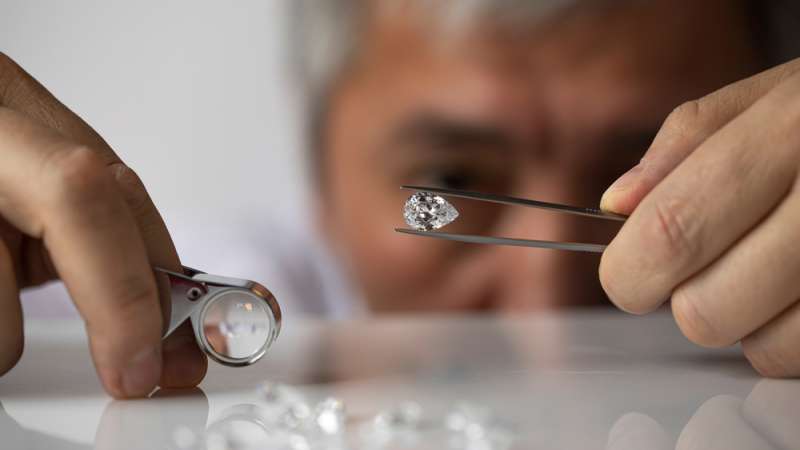
Pear-cut Diamonds: Basics
Now, let’s explore the pear-cut diamond and examine its origins, appearance, and key characteristics to compare it with oval-cut diamonds.
The pear-cut diamond traces its roots back to 15th-century Belgium. In 1475, a skilled diamond cutter named Lodewyk Van Bercken revolutionized the diamond industry with his invention of the diamond-polishing wheel, also known as the scaif. Notably, this was also the year when the pear-cut diamond was first created.
This diamond cut features 58 facets and remains one of the most brilliant diamond cuts to this day. Lodewyk Van Bercken’s innovation truly showcases the remarkable sparkle that can be achieved with this cut. The pear-cut diamond is renowned for its ability to capture and reflect a significant amount of light, resulting in stunning brilliance.
For optimal results, diamonds recommended for pear-cutting should possess a clarity level of VS (very slightly included) or higher, including VVS (very, very slightly included) or FL (flawless).
Pear-cut diamonds are commonly used in diamond rings, particularly engagement rings, as well as earrings and some necklaces. These diamonds are typically cut into sizes ranging from 0.5 carats to 1 carat, serving as central pieces or standalone gems in exquisite jewelry designs.
Currently, pear-cut diamonds enjoy substantial popularity in the diamond world and align with the prevailing trends. While round-shaped diamonds remain highly sought after, the pear-cut has emerged as a favored choice among diamond enthusiasts. So, if you’re aiming to follow the current trends in the diamond industry, you’re likely to encounter captivating jewelry pieces adorned with pear-cut diamonds.
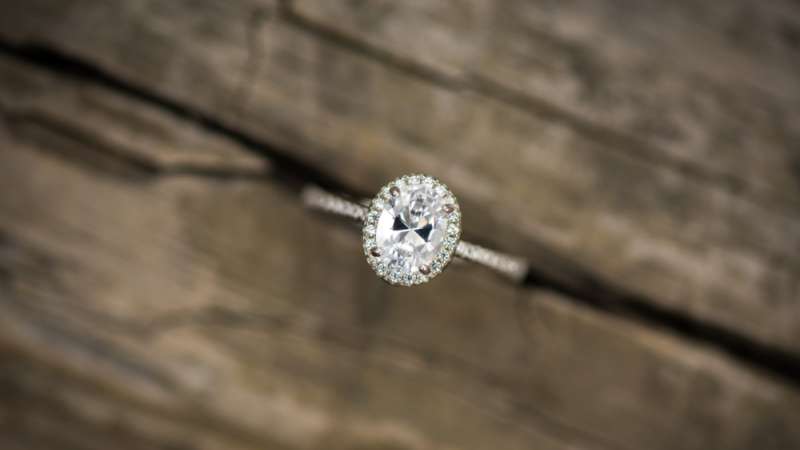
Oval-cut Diamonds: Basics
Now, let’s introduce you to oval-cut diamonds as a point of comparison to your knowledge of pear-cut diamonds and determine the winner between the two.
The history of oval-cut diamonds is relatively shorter and more recent compared to pear-cut diamonds, but don’t be misled—short history doesn’t imply a lack of potential! The oval cut was invented in the early 1960s, which may seem like yesterday when compared to the 15th-century origins of the pear cut.
However, this doesn’t diminish the strengths of the oval cut. In the 1960s, our understanding of diamonds had significantly progressed compared to the knowledge available in 1475. Consequently, the development of the oval cut involved more meticulous thought and precision than earlier cuts.
One notable feature of the oval cut is its ability to create the illusion of a larger diamond size. Similar to round brilliant-cut diamonds, oval-cut diamonds possess a distinct appearance that gives the impression of greater size. This quality makes them highly desirable for engagement rings and other diamond rings.
An oval-cut diamond consists of 58 facets, mirroring the number of facets in a pear-cut diamond. As you can see, these two cuts often emerge as the top contenders when people are faced with the choice between them.
Apart from their prevalent use in engagement ring settings, oval-cut diamonds also shine in various other jewelry pieces like earrings and necklaces. The final appearance depends on the weight of the diamond, but regardless of the specific piece, an oval-cut diamond always exudes a larger look.
If you’re searching for a diamond necklace with a centerpiece that doesn’t overpower, chances are you’ll come across at least one necklace featuring an elegant oval-cut diamond.
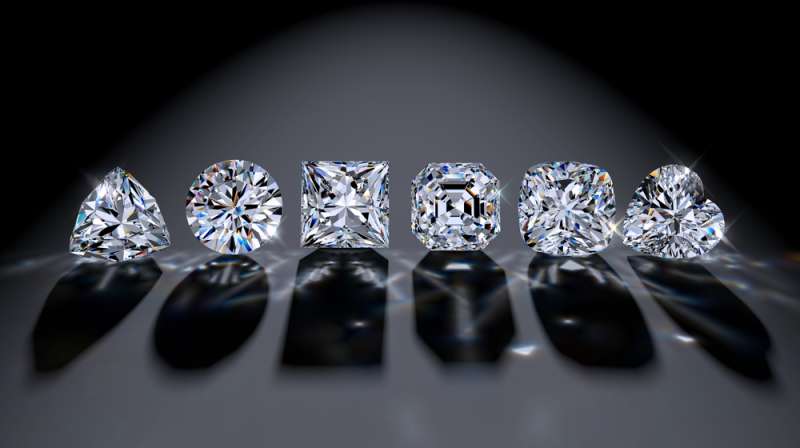
Pear-cut Vs. Oval-cut Diamonds: Pros
Both the pear-cut and oval-cut diamonds possess their own unique strengths and weaknesses, just like any other diamond cut. Let’s delve into the notable strengths of each cut before discussing their limitations.
When it comes to round-shaped diamond cuts, both pear-cut diamonds and oval-shaped diamonds often rank among the all-time favorites. This is largely due to their striking similarities and shared strengths, which naturally draw people towards them.
One prominent advantage of these cuts, as previously mentioned, is their ability to create the illusion of a larger diamond size. While some claim that it can double the perceived size of the diamond, such claims may be exaggerated. Nevertheless, this optical effect undeniably has a significant impact.
However, it’s worth noting that pear-cut diamonds deviate from the typical appearance of round-shaped diamond cuts, so this particular advantage may be more pronounced for oval-cut diamonds.
Another remarkable characteristic of both cuts is their dazzling sparkle. The pear-cut and oval-cut designs allow ample light to enter the center of the diamond, resulting in an unmatched radiance that captivates the eye.
Furthermore, these diamond cuts are often considered affordable, making them accessible to a wide range of individuals. We’ll discuss their pricing in more detail later, but it’s worth noting that these cuts offer an opportunity for anyone and everyone to enjoy their beauty.

Pear-cut Vs. Oval-cut Diamonds: Cons
Like any other diamond cuts, pear-cut and oval-cut diamonds have their drawbacks. However, it’s important to note that these cons are subjective and may not necessarily be seen as negatives by everyone. It ultimately comes down to personal preference and individual taste when considering these factors.
Let’s explore the specific cons associated with each cut:
For oval-cut diamonds, one notable issue is the occurrence of the “bow-tie effect.” This effect is commonly observed in cuts similar to the oval shape, where the distribution of light within the diamond is uneven. As a result, a dark bow-tie-like pattern can be visible in the center of the stone, resembling a bow tie wrapped around the diamond.
In the case of pear-cut diamonds, the pointed end of the stone can be prone to brittleness and potential damage. Although polishing can address minor issues, excessive removal of material from the top can result in an undesirable “chubby” appearance. Additionally, some pear-cut diamonds may appear overly elongated or excessively wide, depending on their individual proportions.
Moreover, similar to other round-shaped diamond cuts, pear-cut and oval-cut diamonds may not showcase their full potential on certain types of jewelry, such as bracelets or tiaras. These cuts may not receive as much exposure or accentuation in these settings, impacting their overall visual appeal.
It’s important to consider these cons when choosing the right diamond cut for your specific jewelry piece, taking into account the intended design and desired aesthetic outcome.
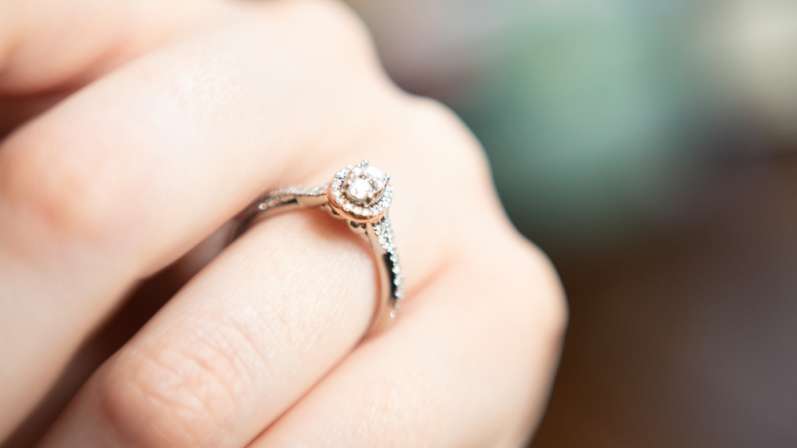
Setting & Jewelry
Throughout this article, we’ve discussed jewelry and the ideal settings for pear-cut diamonds and oval-cut diamonds. Let’s delve into what works well and what doesn’t for these diamond cuts.
First and foremost, round-shaped diamond cuts are commonly used in engagement rings, and they are particularly well-suited for this purpose. Therefore, rings provide the best opportunity to showcase and enhance the beauty of pear-cut diamonds and oval-cut diamonds.
However, this doesn’t mean that rings are the only option available. It simply implies that deviating too far from rings can result in jewelry pieces that appear awkward or unbalanced.
When it comes to bracelets, they are generally not well-suited for showcasing oval-cut diamonds or pear-cut diamonds. Bracelets typically feature smaller diamonds, often arranged in a pave setting, rather than having a larger centerpiece diamond.
Now that you have an understanding of what to avoid, let’s explore the settings that complement these diamond cuts the most. A prong setting is an excellent choice for a pear-cut diamond. This type of setting involves multiple prongs, usually around 5 or 6, which secure the diamond from different angles. In many cases, two prongs are positioned directly opposite each other.
Prong settings allow ample light to enter the diamond, enabling it to sparkle beautifully. Equally important, this setting holds the diamond securely in place, preventing it from slipping out of the setting and potentially getting damaged. Opting for secure settings is generally recommended to safeguard your diamond from chipping or breakage.
Therefore, when selecting jewelry settings for pear-cut and oval-cut diamonds, it’s advisable to prioritize safe and well-crafted settings that showcase the brilliance of the diamonds while ensuring their longevity.

Cost & Expenses
Finally, let’s discuss the financial aspect. The price tag of a diamond often plays a crucial role in the decision-making process for many people. Generally, the most affordable diamonds tend to be the most popular ones, as they are accessible to a larger number of individuals.
Now, let’s evaluate whether these commonly found diamonds are worth the investment. First, let’s consider the prices of both diamond cuts. A 1-carat pear-cut diamond is typically priced around $2,200, while an oval-cut diamond of the same size usually costs around $1,700. It’s important to note that there are diamond cuts available in the market that can cost tens of thousands of dollars for diamonds smaller in carat weight than the 1-carat diamonds we are discussing.
It’s worth mentioning that prices may vary slightly depending on factors such as the specific setting and geographical location. These fluctuations are not significant and generally do not have a major impact on the accessibility of these diamonds. In the market, pear-cut diamonds have been observed to reach prices as high as $3,000 and as low as $1,950.
On the other hand, the prices of oval-cut diamonds have experienced occasional fluctuations, but they tend to stabilize around the previously mentioned price range shortly after any decrease. It’s important to note that both diamond cuts are susceptible to chipping, although pear-cut diamonds are generally more prone to this issue compared to oval-cut diamonds.
Therefore, additional expenses might include the cost of polishing a chipped diamond point or similar interventions. Investing in a high-quality and secure setting can help minimize the risk of damage and ensure the longevity of the diamond, potentially reducing the need for such additional expenses.
In conclusion, when considering the price and potential additional costs, it is essential to assess the overall value and choose a diamond cut that aligns with your preferences, budget, and the level of durability you desire.
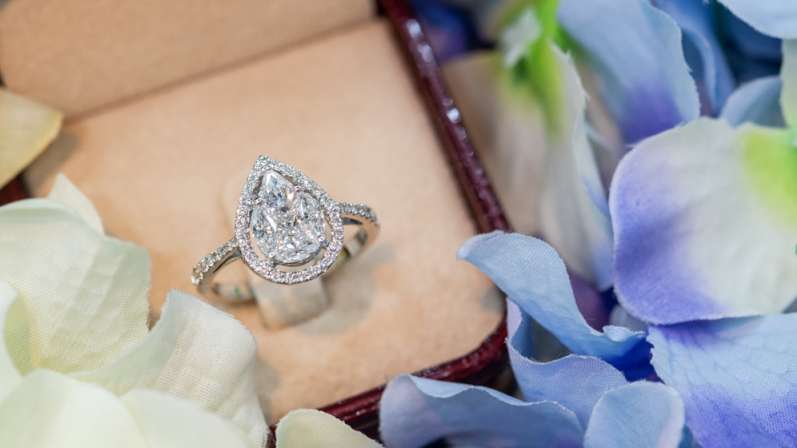
Pear-cut Vs. Oval-cut Diamonds: The Final Answer
Now, let’s share our perspective while acknowledging that you may have different opinions on these matters.
In our view, oval-cut diamonds appear to have fewer issues and are generally more affordable compared to pear-cut diamonds. However, the uniqueness and fashionable appeal of pear-cut diamonds contribute to their higher prices.
It’s important to consider the potential hidden expenses associated with pear-cut diamonds, which could impact your long-term investment.
Overall, both of these round-shaped diamond cuts have their merits and deserve to be considered among the top choices for many individuals. We don’t believe either of these options should be deemed as inferior.
Regardless of which option you lean towards, our ultimate goal is for you to be satisfied with your decision, and we hope that our insights have been helpful in guiding you towards that conclusion!


